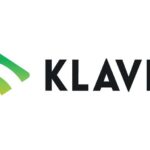DMARC stands for Domain-based Message Authentication, Reporting, and Conformance. It is an email authentication protocol designed to help organizations protect their email domains from unauthorized use, such as phishing or email spoofing.
DMARC builds on SPF (Sender Policy Framework) and DKIM (DomainKeys Identified Mail) email authentication methods. It provides a mechanism for domain owners to specify how unauthenticated messages should be handled.
A DMARC record is a TXT record added to the DNS of the domain. For example:
v=DMARC1; p=quarantine; rua=mailto:dmarc-reports@example.com; ruf=mailto:dmarc-forensic@example.com; fo=1v=DMARC1: Specifies the version of DMARC.
p=quarantine: Specifies the policy.
rua: Aggregate report email address.
ruf: Forensic report email address.
fo=1: Provides detailed forensic reports on failures.
DMARC is a critical tool for email security, enabling organizations to protect their reputation and users from malicious actors.
For more info please visit this link https://support.google.com/a/answer/2466580?hl=en


